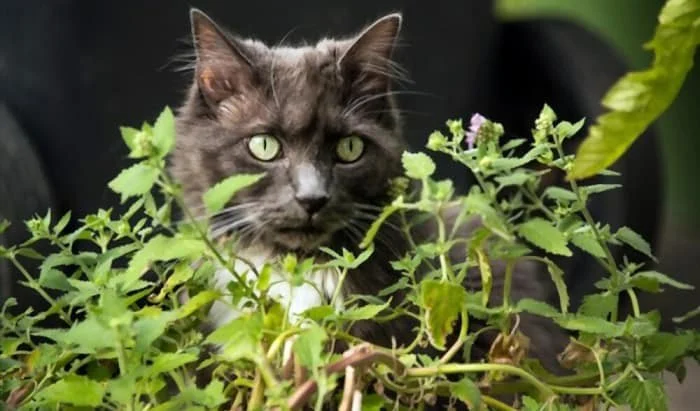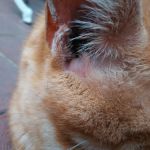
- 1. Introduction: The Fascinating World of Catnip
- 2. Why Do Cats Love Catnip?
- 3. The Science Behind Catnip and Cats' Reactions
- 4. Is Catnip Safe for Cats?
- 5. Catnip Alternatives for Cats Who Don’t Respond
1. Introduction: The Fascinating World of Catnip
If you've ever owned a cat, you’ve probably witnessed them going wild over catnip. But what exactly is catnip, and why do cats love it so much? This plant, scientifically known as Nepeta cataria, is a member of the mint family and has a unique effect on our feline friends. In this article, we'll explore why cats are so drawn to catnip, the science behind their reactions, and whether it's safe for them. Plus, we’ll look at some alternative options for cats who don’t seem to respond to catnip at all.
2. Why Do Cats Love Catnip?
Many pet owners have seen their cats react excitedly to catnip – rubbing their faces in it, rolling around on the floor, or even zooming around the house like they're on a mission. But what is it about catnip that causes such a strong reaction in some cats?
The answer lies in a compound found in catnip called nepetalactone. This chemical mimics the effect of certain pheromones that cats produce, which is why catnip can trigger such a playful and euphoric response in them. However, not all cats respond to catnip in the same way. In fact, approximately 50-70% of cats are genetically predisposed to react to catnip. The rest may show no interest at all.
3. The Science Behind Catnip and Cats' Reactions
When a cat smells catnip, the nepetalactone binds to receptors in their nasal tissue. This triggers a response in the brain, stimulating certain areas associated with pleasure and excitement. The result is a behavior often described as a "high," which typically lasts around 10-15 minutes. After this period, the effects wear off, and the cat will usually lose interest.
The reaction can include behaviors such as:
- Rolling around on the floor
- Increased playfulness
- Rubbing or rolling on the catnip
- Vocalization or meowing
It’s important to note that catnip doesn’t actually harm cats. The euphoric effects are temporary, and most cats will return to their usual selves once the catnip wears off.
4. Is Catnip Safe for Cats?
One of the most common questions cat owners have about catnip is whether it’s safe for their cats. Fortunately, the answer is yes! Catnip is completely non-toxic to cats, and it poses no long-term health risks. In fact, many veterinarians recommend using catnip as an enriching tool for indoor cats, as it can stimulate mental and physical activity.
However, moderation is key. Too much catnip can lead to mild digestive upset or an overstimulated cat. It's best to use catnip in small doses and monitor your cat’s reaction. If your cat shows signs of discomfort or excessive hyperactivity, consider limiting their exposure.
5. Catnip Alternatives for Cats Who Don’t Respond
Not all cats react to catnip, as the sensitivity to it is inherited. If your cat falls into this category, don’t worry! There are other ways to stimulate your cat and provide enrichment:
- Silvervine: Another plant known to affect cats, silvervine is less common but often more effective in non-catnip responders. It contains actinidine, which triggers a similar euphoric reaction in some cats.
- Valerian Root: Known for its calming effects in humans, valerian root can also excite some cats, leading to playful behavior. It's a great alternative for those who don’t react to catnip.
- Cat Grass: While it doesn't produce a "high," cat grass can be a fun, safe way to stimulate your cat’s senses and encourage healthy digestion.
These alternatives can provide similar benefits to catnip, offering variety and excitement for your cat’s playtime.









 Californiacanaries.com5.0 (7 reviews)
Californiacanaries.com5.0 (7 reviews) Fish Works4.0 (46 reviews)
Fish Works4.0 (46 reviews) Merch For Dog Lovers5.0 (4 reviews)
Merch For Dog Lovers5.0 (4 reviews) Wet Pets4.0 (7 reviews)
Wet Pets4.0 (7 reviews) Artesia Animal Hospital4.0 (34 reviews)
Artesia Animal Hospital4.0 (34 reviews) Banfield Pet Hospital4.0 (241 reviews)
Banfield Pet Hospital4.0 (241 reviews) How to Handle an Aggressive Dog on the Leash | Leash Training Tips
How to Handle an Aggressive Dog on the Leash | Leash Training Tips The Best Diet for a Scottish Fold Kitten's Joint Health
The Best Diet for a Scottish Fold Kitten's Joint Health Why Is My Dog's Stomach Making Noises? Borborygmi Explained
Why Is My Dog's Stomach Making Noises? Borborygmi Explained How to Recognize Normal vs Aggressive Kitten Play Fighting
How to Recognize Normal vs Aggressive Kitten Play Fighting Top 10 Most Common Health Issues in Cats and How to Prevent Them
Top 10 Most Common Health Issues in Cats and How to Prevent Them Why Does My Cat Have Black Stuff in Their Ears? Causes and Solutions
Why Does My Cat Have Black Stuff in Their Ears? Causes and Solutions